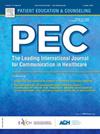Development of GROVE: A Guideline for RepOrting Vignette Experiments conducted in a healthcare context
IF 2.9
2区 医学
Q2 PUBLIC, ENVIRONMENTAL & OCCUPATIONAL HEALTH
引用次数: 0
Abstract
Objective
Experimental studies using vignettes investigate the impact of healthcare professional or patient/client characteristics, communication, and/or other behaviors on outcomes. To ensure methodological rigor and quality, guidance is needed for systematic reporting of such studies. We describe the development of the Guideline for RepOrting of Vignette Experiments (GROVE).
Methods
A steering group comprising experts in vignette research oversaw guideline development using an iterative and expert-driven approach. The development process included reviewing relevant literature, developing draft reporting criteria, soliciting feedback from a working group of international experts, applying the draft criteria to completed or planned vignette studies, and iteratively revising criteria until final group consensus was reached. GROVE was registered with the EQUATOR network repository of reporting guidelines.
Results
The final guideline encompasses the following criteria: 1. Rationale for a vignette design; 2. Vignette content; 3. Outcomes; 4. Vignette validity & realism; 5. Participants; and 6. Accessibility. Criterion 2 is further divided into five sub-criteria: 2.1. Healthcare scenario; 2.2. Manipulation & standardization; 2.3. Mode of delivery; 2.4. Expert involvement; and 2.5. Pilot testing.
Conclusion
GROVE offers authors guidance in reporting experimental vignette studies.
Practice implications
Transparent reporting of vignette studies will help readers evaluate the reliability and validity of study findings, replicate studies, and extract relevant information for reviews.
GROVE的发展:在医疗保健环境中进行的小插曲实验报告指南
目的实验研究使用小插图调查医疗保健专业人员或患者/客户特征、沟通和/或其他行为对结果的影响。为了确保方法的严谨性和质量,需要对这类研究的系统报告提供指导。我们描述了小插曲实验报告指南(GROVE)的发展。方法由小案例研究专家组成的指导小组使用迭代和专家驱动的方法监督指南的制定。制定过程包括审查相关文献,制定报告标准草案,征求国际专家工作组的反馈意见,将标准草案应用于已完成或计划的小研究,并反复修订标准,直到最终达成小组共识。GROVE已在EQUATOR网络报告准则储存库中登记。最终指南包括以下标准:1。插图设计的基本原理;2. 装饰图案内容;3. 结果;4. 小插曲有效性& &;现实主义;5. 参与者;和6。可访问性。标准2进一步分为5个子标准:2.1。医疗场景;2.2. 操纵,标准化;2.3. 交付方式;2.4. 专家参与;和2.5。试验测试。结论:rove为作者报告实验性小研究提供了指导。实践意义小研究的透明报告将有助于读者评估研究结果的可靠性和有效性,重复研究,并提取相关信息进行综述。
本文章由计算机程序翻译,如有差异,请以英文原文为准。
求助全文
约1分钟内获得全文
求助全文
来源期刊

Patient Education and Counseling
医学-公共卫生、环境卫生与职业卫生
CiteScore
5.60
自引率
11.40%
发文量
384
审稿时长
46 days
期刊介绍:
Patient Education and Counseling is an interdisciplinary, international journal for patient education and health promotion researchers, managers and clinicians. The journal seeks to explore and elucidate the educational, counseling and communication models in health care. Its aim is to provide a forum for fundamental as well as applied research, and to promote the study of organizational issues involved with the delivery of patient education, counseling, health promotion services and training models in improving communication between providers and patients.
 求助内容:
求助内容: 应助结果提醒方式:
应助结果提醒方式:


